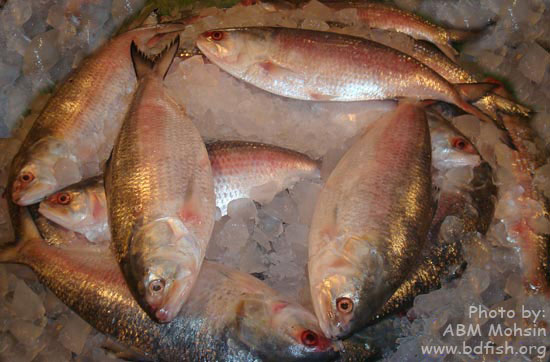Systematic position Phylum: Chordata Class: Actinopterygii (Ray-finned fishes) Order: Siluriformes (Catfish) Family: Amblycipitidae (Torrent catfishes) Genus: Amblyceps Species: A. mangois Synonyms Pimelodus mangois Hamilton, 1822 Pimelodus indicus McClelland, 1842 Common/Local names Indian torrent catfish (FishBase), Billi and Sudaal (India)( Talwar
Least Concern (LC) Freshwater Fishes of Bangladesh

A Least Concern (LC) species is one which has been categorized by the International Union for Conservation of Nature (IUCN) as likely lowest risk, widespread, abundant taxon and does not qualify for a more at-risk category. According to IUCN Bangladesh
List of Freshwater Fishes of Bangladesh and their conservation status
List of freshwater fishes of Bangladesh including their local conservation status (IUCN 2015a and b) are given below. In the list, name of fishes has been arranged alphabetically. The latest local conservation status of listed fishes is mentioned here according
Photofeature: Freshwater Fishes of Sunamganj Haor Area (Part-A)
Ailia coila (Hamilton, 1822) English Name: Gangetic ailia Bengali Name: Kajuli (কাজুলি) and Baspata (বাঁশপাতা). IUCN (Bangladesh) Status: Not threatened Amblyceps mangois (Hamilton, 1822) English Name: Indian torrent catfish Bengali Name: Kanoch (কানোচ) IUCN (Bangladesh) Status: Data deficient Amblypharyngodon
Book profile- Introduction to fish species diversity: Sunamganj haor region within CBRMP’s working area
“Introduction to fish species diversity: Sunamganj haor region within CBRMP’s working area” presents mainly a checklist of fish species of Sunamganj haor region within CBRMP’s working area and their profile (taxonomic position including English, Bangla and scientific name; fin formula; body
Freshwater and Estuarine Fishes of Bangladesh
Freshwater and Estuarine Fishes: General parameter to differentiate freshwater from estuarine habitat is the salinity level of water. Freshwater contains less than 0.5 ppt (Parts Per Thousand) salinity whereas estuarine water contains moderate salinity (generally 14-17 ppt). We can easily
